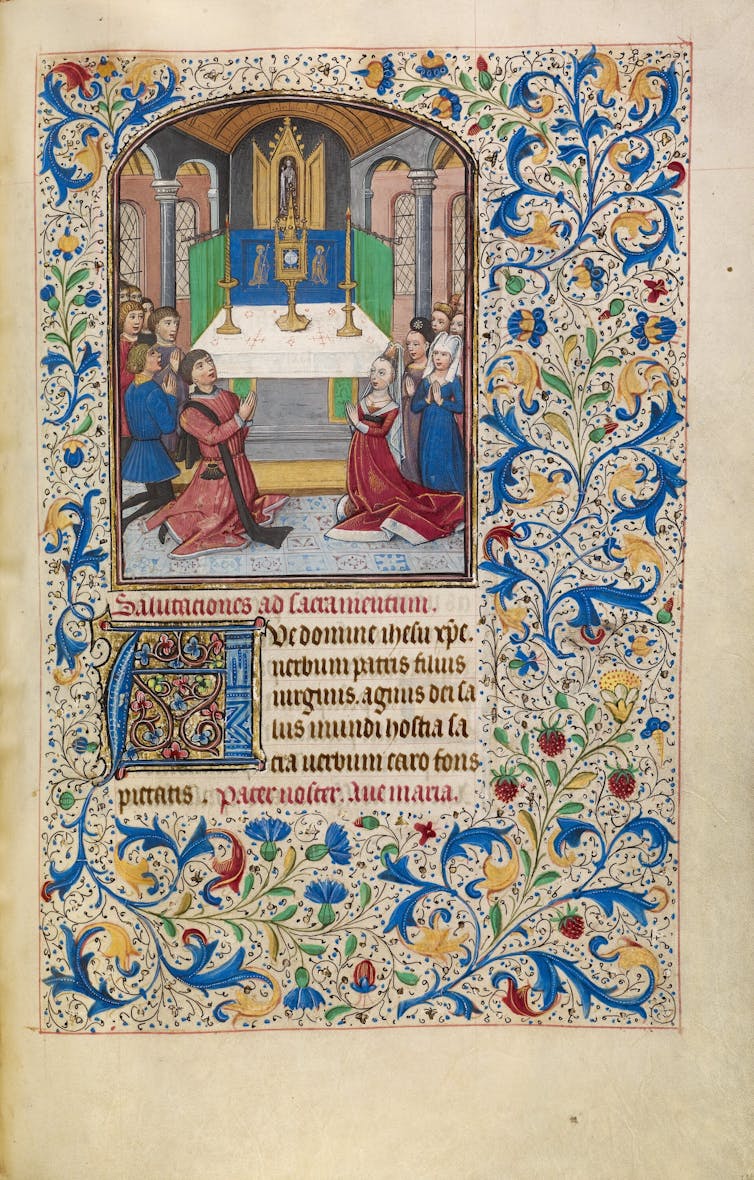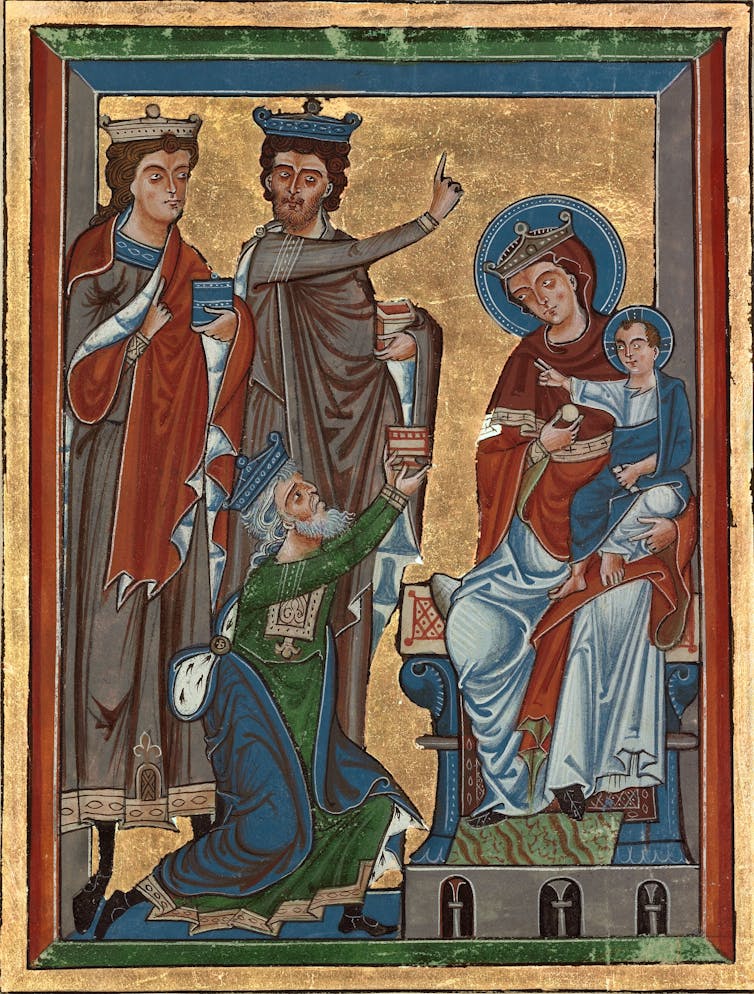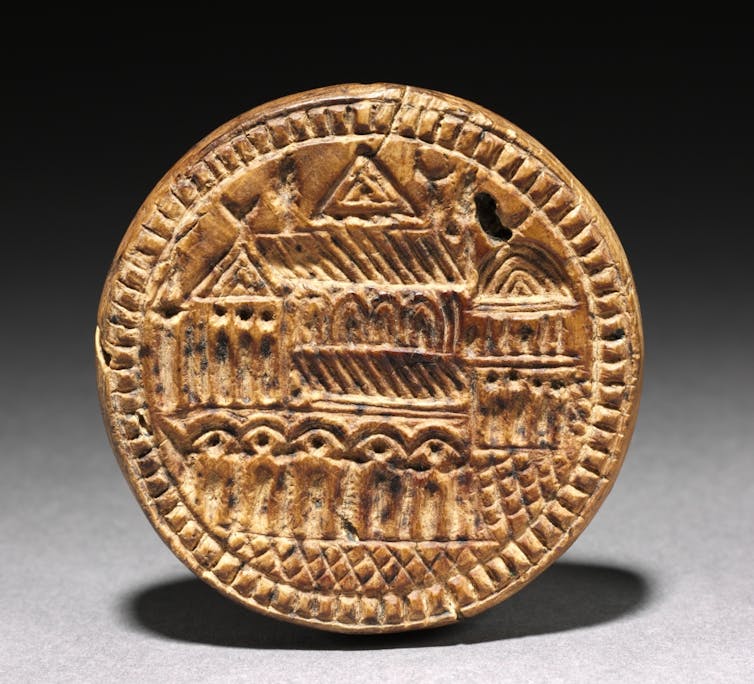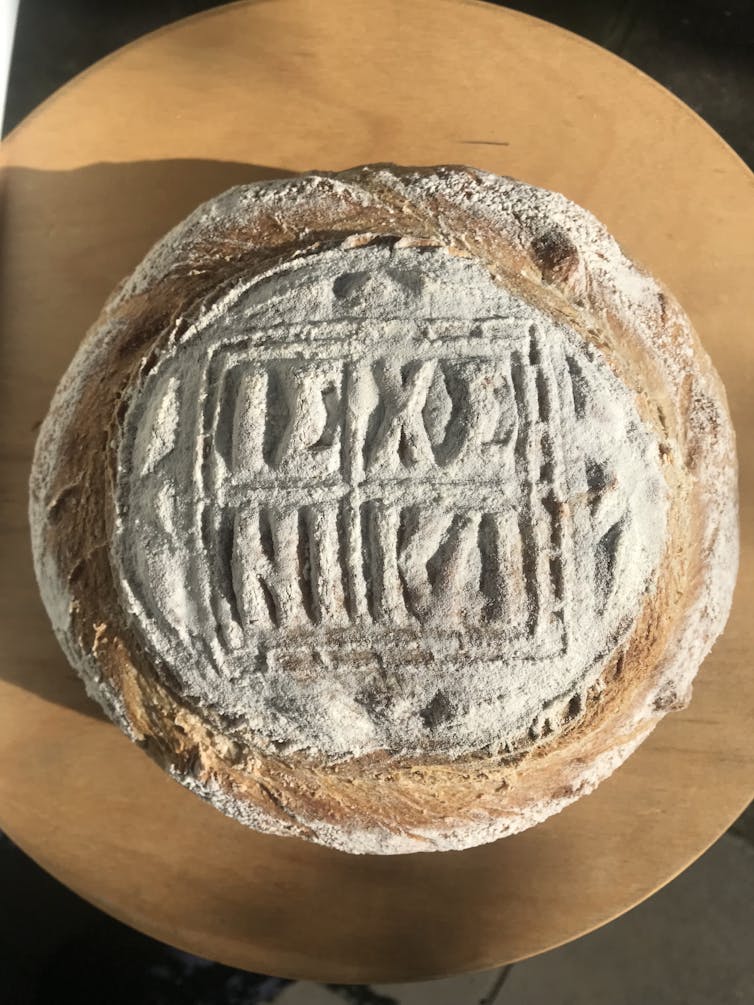Source: The Conversation (Au and NZ) – By Robert Nelson, Honorary Principal Fellow, The University of Melbourne

A nasty quarrel arose in the 11th century over what kind of bread should be used in holy communion.
The view in Constantinople was the bread for the eucharist must be sourdough. But in Rome, an unleavened wafer had been used for longer than anyone could remember and the Vatican argued unleavened bread was more authentic.
It might sound like a storm in a chalice, but it mattered a lot because church authority seemed to be at stake.
Neither side could back down, and the grand fracas – known as the “azyme controversy of 1054” – became so divisive that it led, among other quibbles, to the schism of east and west. Today, the sourdough loaf in the Orthodox liturgy is cut up and mixed with wine, while the Catholic church still uses a small circular wafer.
Scholars have difficulty accounting for this unfortunate brawl. Was it politically motivated, or just an escalation of insults among bickering headstrong men that’s best forgotten?
But rather than reading the controversy as a case study in antagonism, it occurred to me the historical record is useful in illuminating medieval attitudes to bread and fermentation.
Christ’s sacrifice
The Byzantine Greeks had a gut reaction to the Latin wafer or matzo (azymon). They were disgusted by the idea of an inflexible board representing the Saviour. The Lord’s body had to be figured in a more flesh-like genuine bread.
They accused the Latin wafer of being like the clay of a brick; the Latin unleavened bread as being “dead” (nekron). Even in the 8th century, John of Damascus described this characterless wafer as “insipid” (moron).
Much of the debate concerned doctrine.
The Byzantines thought the Latins didn’t really understand the point of the sacrament, because their unleavened bread was a throw-back to Jewish practice. The Byzantines said they must not Judaicise (ioudaïzein) the holiest rite, which is all about Christ’s sacrifice that Jews don’t recognise.

Getty Museum
Aside from these dogmatic arguments, an important part of the Greek revulsion against the wafer was aesthetic. The leaven in the sourdough process was identified with life and warmth and the bread itself – though technically sour – is endowed with sweetness (hedytes).
The Latin church retorted the fermentation of the dough introduces an impurity into the angelic substance of the eucharist. After all, they said, the process of sourdough must be a bit like rot or putrefaction.
It seemed to them the original unadulterated ingredients of wheat and flour are sullied by (the then) unknown alien substance that eventually results in degradation and spoiling (vitiatio).
Observing the yeast
Behind this disagreeable theological dispute between eastern and western churches, we gain precious insight into how the premodern mind understood fermentation, and especially what distinguishes it from rot and decay.
The debate brings out intuitions that anticipate the findings of Louis Pasteur 800 years later, who understood the action of yeasts as an additive process rather than a form of decay.
Actually, the positive interpretation of yeast begins with Jesus himself. In a Biblical verse quoted repeatedly during the squabble, Jesus compares heaven to sourdough:
The kingdom of heaven is like unto leaven (zyme), which a woman took, and hid in three measures of meal, till the whole was leavened.
As the Byzantines argued, Jesus wouldn’t have proposed this analogy if he thought the leaven was some form of corruption that takes over and damages the food.

Getty Museum
His parable envisages good things (think divine love) spreading miraculously in the holy environment, in the same way the lump of dough is enriched by the discrete amounts of leaven that end up permeating it.
The Byzantines and Pasteur would agree with Jesus. Following Pasteur, we identify the wild yeast in sourdough as lactobacillus – but there was no microscope in the middle ages and a scientific approach could only be based on what could be seen, which is marvellously enigmatic.
The Latin view rejected the homely Greek interpretation. Their Vulgate Bible mistranslates a line of Paul, saying “a little leaven spoils (corrumpit) the whole lump”, instead of “a little leaven leaveneth (zymoi) the whole lump”.
A belligerent Cardinal Humbert dismissed the analogy of heaven and leaven, scoffing that Jesus also compares heaven to a seed of mustard.

The Cleveland Museum of Art
Humbert argued the yeast in the leaven has to come from somewhere: its origins belong with similar yeasts in beer, and these in turn are related to the scum of foul organic matter.
Humbert also reminds us of what happens when you leave the leavened dough for too long: it goes off and becomes inedible.
Read more:
What every new baker should know about the yeast all around us
Heavenly sourdough
Today we might say that the Latins came to the wrong biochemical conclusions, but in many ways their approach was more empirical and scientific. Observing how leavened dough easily becomes foul, they reasoned that fermentation must involve impurities.
For those of us who haven’t looked at a microscope since high school, the Byzantine polemic in general helps us understand how we still imagine microbiological processes without being able to see or name the various bacteria and enzymes at work.

Robert Nelson
Even after peak sourdough during the lockdowns, sourdough strikes me as mysterious as a process and seductive in its results, with a tough texture and pleasantly sour taste arising from unseen bugs.
And though our secular bakers are remote from the passionate theology of Byzantine clerics, we know deep down that sourdough is heavenly and the most charismatic of breads.
Read more:
Why Communion matters in Catholic life — and what it means to be denied the Eucharist
![]()
Robert Nelson does not work for, consult, own shares in or receive funding from any company or organisation that would benefit from this article, and has disclosed no relevant affiliations beyond their academic appointment.
– ref. A eucharist of sourdough or wafer? What a thousand-year-old religious quarrel tells us about fermentation – https://theconversation.com/a-eucharist-of-sourdough-or-wafer-what-a-thousand-year-old-religious-quarrel-tells-us-about-fermentation-212698








